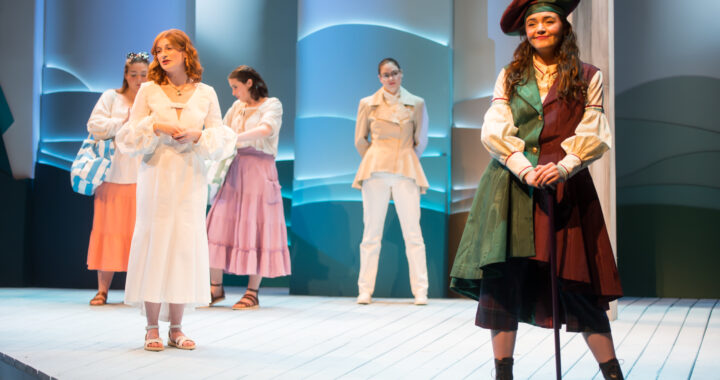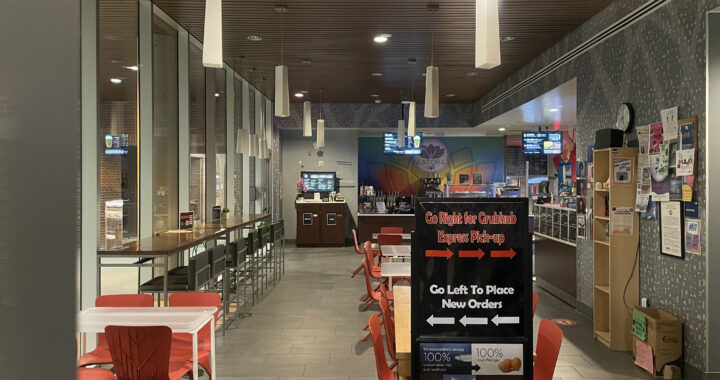Student Embraces Tradition
4 min readBY ELIZABETH SWAUGER
Soul beats. An eagle crowing. Soft leather moccasins pressing into the dusty ground. Clockwise, always dancing clockwise. Air rushing through skirts, swishing. Drums. Music. Old music, ageless chants, mournful wisps of the past gliding through the air. Feathers, nestled deeply in tight dark braids. Hand stitched buckskin, beadwork Color flashing by. Movement. Dusty earthy arms stretching out, up, back down. Chanting. These are the images of a Powwow.
Powwows are a large part of Native American Culture. They are a time to socialize with other Indians while simultaneously sharing their culture and heritage with the public. The length of any given Powwow will vary and there will typically be dances, traditional foods, crafts and other festivities.
This Saturday, Spetember 22, the Chickahominy Tribe will be hosting a Powwow in Charles City and it will be open to the public. Raven Custalow, a junior at UMW and member of the Mattaponi Tribe, will be participating in this powwow, as she has since elementary school. The Mattaponi, along with the Chickahominy, are part of the eight recognized tribes in Virginia, and both are part of the Powhatan Tribe.
There are many different types of dances at Powwows. Each different type of dance has unique outfits and dance steps which correspond with each other. The Ceremonial Dances are typically not done at Powwows as they are the most sacred of the dances and are not performed for the public.
If you are able to attend a Powwow, keep an eye out for the “traditional” women dancers. They are the most highly respected and honored of the dancers. Their dances are not as lively and fast as some of the “Fancy Dancers,” instead, their movements are more fluid and “breezy.” For more information on Powwows dances, drumming, or etiquette, go to www.powwows.com.
Custalow participates in what is called the “Women’s Buckskin Traditional.” She describes her experiences in the Powwows: “When I am there and I am dancing I am doing it for my people, and the pride that I have just takes over. When I am in the circle—I can’t even explain—I am just so proud, and I am not ashamed of my culture. I am just blessed to be a part of it. Even though so much of our culture was taken away, being in the circle and dancing with other natives just makes you feel connected to each other and connected to your past and it makes me feel a part of it.”
Dances are not only the only highlight of Powwows, there is also the fantastic food. The fragrant, nose-tingling aromas of foods and traditional dishes will be monopolizing the air at any given Powwow. The Mattaponi typically serve fry bread, succotash and Indian tacos for starters. Custalow stated that “Personally, I think my mom cooks the best fry bread. It is the best thing in the world. The closest thing I can compare it to is funnel cake. It’s flat and golden-brown and sometimes you put honey, powdered sugar, or cinnamon on top.
Perhaps one of the greatest parts of the Powwows are simply being out in nature and being able to steal a glimpse into life on the reservation. The reservation revolves around the Mattaponi River, 85 miles of sparkling life flowing across the eastern plains of Virginia. This river has been an integral part of the Native American culture and traditions both currently and throughout their past.
The fact that Powwows still exist today is practically a miracle. It takes a strong people to be able to maintain their traditions after four centuries of people trying to assimilate them into “American culture.”
Custalow credits her grandmother and father as being two instrumental people who have played a huge role in helping keep the Mattaponi traditions alive. Her grandmother teaches the “Old Way” to students at the community building. She teaches Native American students how to make buckskin clothing, handmade pottery and instructs them on the Algonquin language. She is “one of the last ones who still remembers the ways of [the] people.”
Custalow’s father was also in a drum group and he helped compose and perform many Indian songs as a way to help preserve their culture. Custalow herself hopes to one day become fluent in the language of her people and teach it to others.
“So much was taken away from us,” she explains, “We were forced to assimilate.” Right now her tribe is working hard to bring back much of the culture which has been lost throughout the years. “Parents are not teaching as much about culture as they once did,” Custalow states. The Powwows are one way that the Mattaponi can showcase their heritage and their Native American pride.











